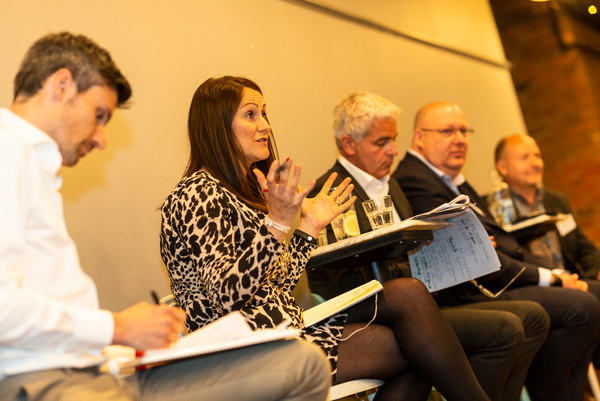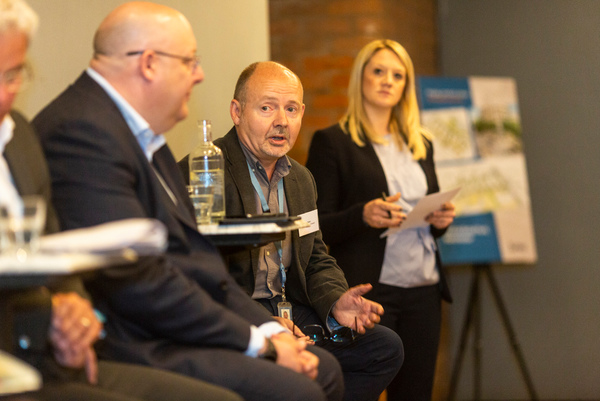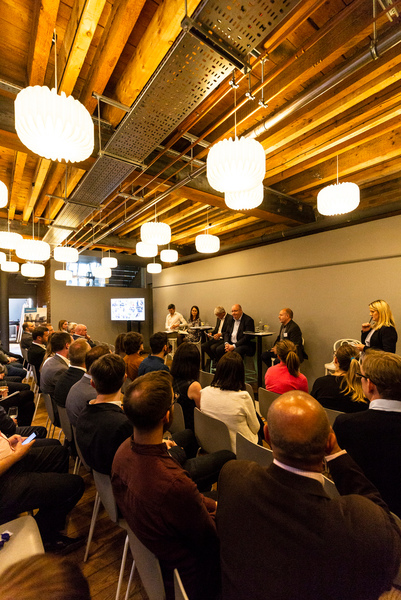News
People, Product, Place: the Liveable City Centre
Last month Turley hosted its inaugural Liveable City Centre event in Manchester.
The event explored what the future holds for the city centre residential sector, how we deliver quality and make our city centres more accessible, diverse and inclusive as places to live. This conversation takes place against the backdrop of an unprecedented period of investment in the city centre residential market, with institutional funding entering the sector for the first time and masterplans being advanced, and delivered, for new quarters which will push boundaries of our city centres outwards. This context brings significant opportunities to reimagine our city centres as places to live, to drive product innovation and deliver the infrastructure and environment needed to build thriving and cohesive city centre communities.
We brought together a panel of leading influencers in this area:
- Angela Barnicle – Chief Officer for Asset Management and Regeneration, Leeds City Council (Twitter: @AngelaBarnicle)
- Iain Murray - Managing Director LIV Consult (Twitter: @iain_murray)
- Ian Slater – Head of Residential Growth, Manchester City Council
- Richard Upton – Deputy Chief Executive of U+I (Twitter: @uandiplc)

The debate covered a broad range of themes including design, community infrastructure, affordability, the key ingredients of better places, the ‘emerging elderly’, space standards and the demand for family housing in our city centres.
Richard Upton, Deputy Chief Executive of U+I, the regeneration specialist bringing forward Manchester’s Mayfield site, has criticised the ‘lazy’ city centre property market and developers who are simply ‘riding the Build To Rent (BTR) wave’.
He spoke of a ‘real opportunity’ to create a broader residential product offering in cities and called for the construction of more terraced townhouses to provide family-friendly homes in densely populated areas.
"Terraced houses allow you to work carefully with density and are a great way to provide tight-knit family homes as long as the product is high quality," he said.
Liv Consult’s Iain Murray defended the BTR boom, explaining that it will lead to higher housing standards in the UK and holding Manchester up as an exemplary city for the BTR model.
He said: "I believe Build To Rent can actually make an enormous difference to how we build in the UK and drive up quality in the market.
"Manchester was the jewel in crown for BTR for a while and other UK cities have come here to learn from that and taken lessons away."

For Angela Barnicle the offering alongside residential products was key. She stressed the importance of creating the infrastructure to support families alongside residential construction as well as the community spaces for people to interact with each other.
"It’s important to create spaces for human interaction as well as offering choice for a diverse city market."
Angela went on to make a plea to the development industry to do the right thing when thinking about development viability and stand up to their responsibilities to deliver the community infrastructure, particularly affordable housing, which our city centres need.
Richard Upton agreed, adding: "Great places can create great profit. Attracting footfall, achieving an appropriate mix, protecting heritage and creating high-quality public realm are all critical."
Ian Slater questioned which spaces now provided social interactions in modern cities with the decline of traditional public houses and churches in recent years, suggesting that perhaps coffee houses were the new focal point for communities.
The debate touched on a number of other themes including the emergence of the ‘new elderly’ market, which the panel believe will become more important over the next five years as many seek to downsize to city centres, particularly in heritage cities such as Edinburgh and York.
The issue of ‘micro-housing’ – small city centre apartments – was also addressed, with panellists agreeing that such products can serve an important purpose for first-time renters seeking to ‘have their own front door’, live near their workplace or save up a deposit to buy a property. There was some debate around the role of space standards but also significant concerns that they stifle innovation, don’t deliver good design and a suggestion that they are a product of historic mistrust of the development industry and their ability and willingness to do the right thing.
Community was also a key topic. The panel considered the role of technology in city centre housing, including the potential for overreliance on this to reduce the community interaction. Too much of a good thing?
Emma Dickson, Chairperson of the event and Director of Turley’s Strategic Communications team concluded that the discussion had "only just started to scratch the surface of a complex topic relating to ‘People, Product and Place’ across our Liveable Cities". Turley has set out the intention to continue the debate through a series of follow up events across our Northern cities.

With the rising demand for city centre living, this is just the start of our conversation. We are exploring opportunities to continue our debate across cities in the north.
We hope you found the event engaging and thought provoking, and look forward to your future participation.
For more information please contact:
Andrew Bickerdike, Director, Planning
Emma Dickson, Director, Strategic Communications
Stephen Taylor, Director, Head of Design
Peter Rowe, Associate Director, Planning
#PeopleProductPlace
#LiveableTurley
7 June 2018
